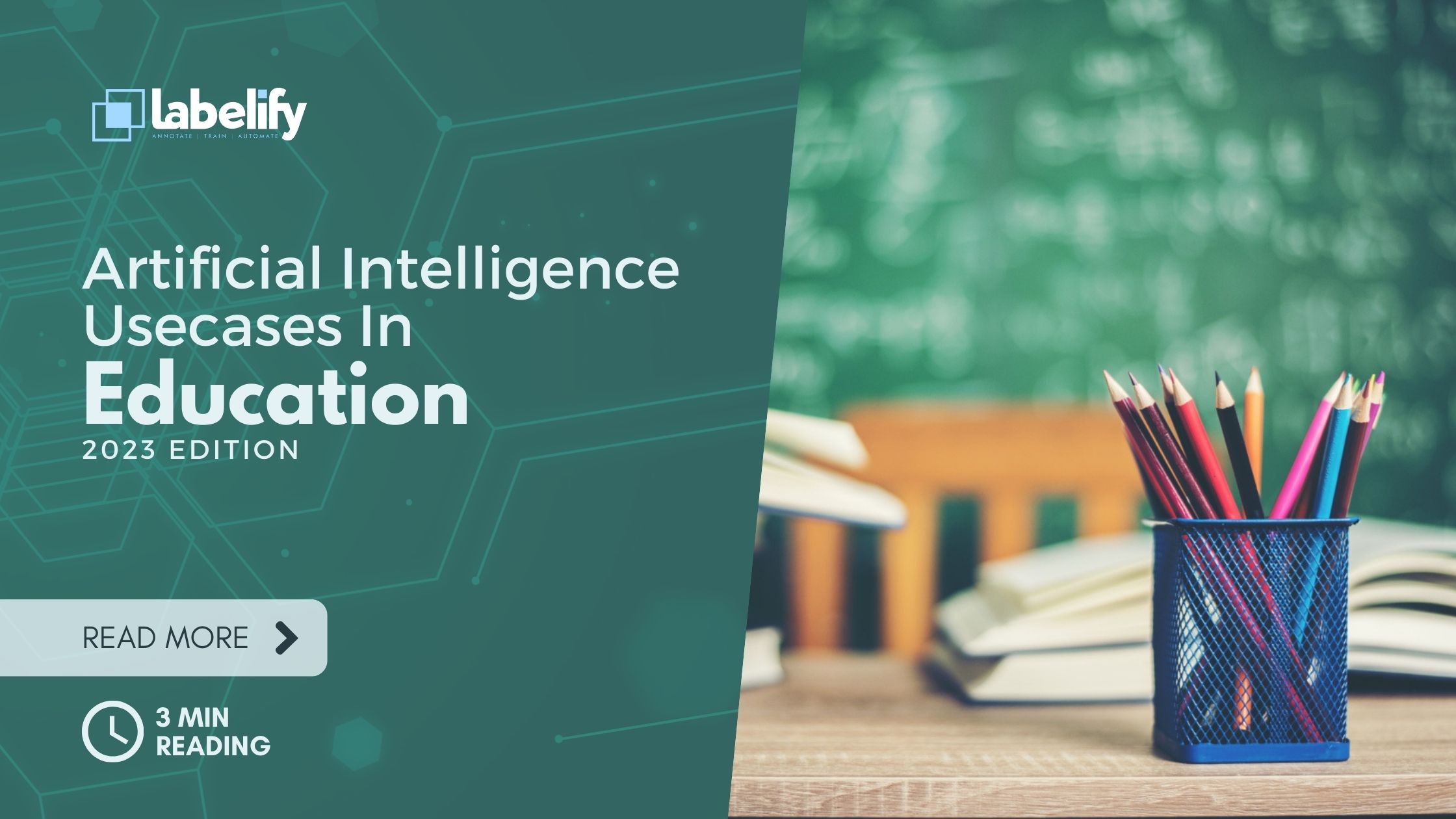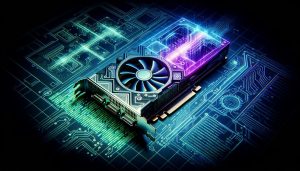The integration of Artificial Intelligence Usecases in Education has seen remarkable growth, with the market projected to reach a value of $6 billion by 2024, representing a 445% growth in just four years.
This transformative technology aligns with UNESCO’s goal of ensuring inclusive and quality education for all Artificial Intelligence Usecases in Education.
By enhancing learning assistance, personalizing education, improving accessibility, and revolutionizing tutoring and grading, AI is reshaping the educational landscape.
In this article, we explore five practical applications of AI in education, showcasing its visionary impact on the learning experience.
Table of Contents
Key Takeaways
- The market size for AI in education is projected to grow significantly, with an expected value of US$6 billion by 2024 and US$12 billion by 2027.
- AI technology in education offers various benefits, including improved learning assistance, enhanced classroom experiences, and the ability to personalize learning paths.
- AI enhances accessibility for students with disabilities or language barriers, ensuring equal opportunities for all learners.
- AI applications in education extend beyond the classroom, providing tutoring, testing, and grading support, resulting in improved student outcomes and streamlined assessment processes.
Learning Assistance and Classroom Experience Artificial Intelligence Usecases in Education
In the realm of learning assistance and classroom experience, AI technology has revolutionized the way students engage with educational content and receive personalized feedback. AI has become a powerful tool for enhancing student engagement and promoting active learning in virtual classrooms. Through AI-powered platforms such as Microsoft Math and Cognii’s virtual assistants, students can interact with intelligent systems that recognize their individual needs and provide tailored feedback. These AI applications leverage natural language processing and computer vision to create immersive learning experiences that captivate students and foster their curiosity.
AI in student engagement goes beyond traditional methods, allowing for dynamic interactions and personalized instruction. With AI, students can receive instant feedback on their progress, identify areas for improvement, and access targeted resources to bridge knowledge gaps. By leveraging AI technologies, virtual classrooms can become vibrant and interactive spaces that promote active participation and facilitate meaningful learning experiences.
Personalization and Knowledge Gaps
AI technology in education has paved the way for personalized learning and addressing knowledge gaps. Through AI driven adaptive learning and intelligent tutoring systems, students can receive tailored instruction based on their individual needs and study patterns. This personalized approach ensures that students are able to learn at their own pace and focus on areas where they may be struggling. AI systems can analyze vast amounts of data to identify knowledge gaps and provide targeted interventions to help students fill those gaps. By leveraging AI, educators can create better content in less time and at a fraction of the cost, leading to more efficient and effective education. This innovative use of technology in education is liberating students from the limitations of traditional teaching methods and empowering them to achieve their full potential.
| AI Driven Adaptive Learning | Intelligent Tutoring Systems | Personalized Learning Paths |
|---|---|---|
| Tailored instruction | Individualized feedback | Addressing knowledge gaps |
| Customized learning paths | Personalized guidance | Filling in learning gaps |
| Targeted interventions | Adaptive assessments | Individualized support |
| Personalized content | Tailored learning experiences | Customized instruction |
Accessibility
AI technology in the field of education has significantly improved accessibility for students with diverse needs and abilities. Inclusive technology and assistive devices powered by AI have revolutionized the educational experience, breaking down barriers and empowering all learners. Here are three ways AI is enhancing accessibility in education:
- Audio transcribers and speech recognition software: Tools like audio transcribers in platforms such as Microsoft Teams enable students with hearing impairments to access and participate in classroom discussions. Meanwhile, speech recognition software assists students with limited writing capabilities by converting their spoken words into written text.
- On-site and online education: AI ensures equal opportunities for all students, regardless of their physical disabilities or language barriers. By providing inclusive technology and personalized learning experiences, AI enhances inclusivity in both traditional classrooms and online learning environments.
- Enhancing the classroom experience: AI-powered tools, such as virtual assistants and computer vision-based technologies, offer interactive and immersive learning experiences. These technologies enable students to engage with educational content in ways that cater to their individual needs and abilities.
Through the integration of AI, education becomes a liberating force, enabling every student to access quality learning and reach their full potential.
Outside-the-Classroom Tutoring
Outside-the-Classroom Tutoring Artificial Intelligence Usecases in Education plays a crucial role in enhancing students’ learning experience and providing personalized support. With the advancement of AI, virtual tutoring has become more accessible and effective. AI-powered chatbots, such as Capacity and AllHere, offer personalized one-on-one learning experiences, allowing students to receive tailored support outside the traditional classroom setting. These chatbots have revolutionized the way students interact with educational content, resulting in improved learning outcomes. Moreover, AI-based assessment tools provide feedback on answers and queries, helping students identify and address their knowledge gaps. To illustrate the potential of outside-the-classroom tutoring, consider the following table:
| Benefits of Outside-the-Classroom Tutoring |
|---|
| 1. Enhanced learning experience |
| 2. Personalized support |
| 3. Tailored learning paths |
| 4. Improved learning outcomes |
With AI-powered chatbots and virtual tutoring, students can access additional support and resources that complement their classroom learning, empowering them to achieve their full potential.
Testing/Grading
The implementation of AI technology in education extends beyond outside-the-classroom tutoring, with testing and grading being another area where AI demonstrates its practical applications.
Here are three ways AI is revolutionizing testing and grading in education:
- Automated Assessment: AI-based assessment systems utilize advanced algorithms to automatically evaluate student responses. This saves time for educators and provides more accurate results, enabling personalized feedback and targeted intervention.
- Vision-Based Grading: Vision-based grading tools, such as GradeScanner, utilize computer vision technology to analyze images of bubble sheets and generate accurate grades. This eliminates the need for manual grading, reducing human error and ensuring consistent and objective evaluation.
- Streamlined Process: AI streamlines the testing and grading process by automating administrative tasks, such as data entry and result compilation. This frees up valuable time for educators to focus on providing personalized instruction and support to students.
With automated assessment and vision-based grading, AI is transforming the testing and grading landscape, creating more efficient and effective educational experiences for students and educators alike.
Frequently Asked Questions
How Does the Microsoft Math Application Use AI to Assist Students With Math Equations?
The Microsoft Math application utilizes AI to assist students with math equations by employing OCR (Optical Character Recognition) technology. This enables the application to recognize math equations and provide solutions in real-time.
By leveraging AI, students can receive instant feedback and guidance on their math problems, enhancing their learning experience and promoting a deeper understanding of mathematical concepts.
The integration of AI in education, as exemplified by the Microsoft Math application, demonstrates the powerful potential of technology to revolutionize and enhance the educational landscape.
What Is the Role of NLP in Cognii’s Virtual Assistants and How Do They Provide Feedback to Students?
NLP plays a crucial role in Cognii’s virtual assistants by enabling them to provide valuable feedback to students.
Through natural language processing, Cognii’s virtual assistants can understand and analyze students’ responses and provide personalized feedback in real-time.
This feedback helps students understand their strengths and weaknesses, identify areas for improvement, and guide their learning journey.
How Does Blippars’ Computer Vision-Based Technology Enhance Visual Learning in the Classroom?
Blippars’ computer vision-based technology revolutionizes visual learning in the classroom by providing an immersive and interactive educational experience.
This innovative technology uses computer vision algorithms to analyze and interpret visual content, allowing students to engage with educational materials in a more dynamic way.
By incorporating augmented reality and object recognition, Blippars’ technology brings static images and traditional learning materials to life, enhancing students’ understanding and retention of complex concepts.
This visionary approach to visual learning expands the possibilities of education, fostering creativity and critical thinking in students.
How Does Microsoft Teams for Education Use AI to Improve Student Engagement and Track Progress?
Microsoft Teams for Education leverages AI to enhance student engagement and track progress.
Through the use of AI-powered features, such as Education Insights, Microsoft Teams provides educators with valuable data and analytics to monitor student performance and identify areas for improvement.
Additionally, Cognii’s virtual assistants, utilizing Natural Language Processing (NLP), offer personalized feedback to students, creating a more interactive and supportive learning environment.
What Are the Benefits of Labelify’s Optical Character Recognition Tool in the Education Sector?
The benefits of Labelify’s Optical Character Recognition (OCR) tool in the education sector are significant.
OCR technology enables the conversion of printed or handwritten text into digital format, enhancing accessibility and efficiency in educational settings.
With Labelify’s OCR tool, educators and students can easily digitize and analyze printed materials, saving time and effort.
The tool also facilitates the creation of personalized learning content, allowing for targeted instruction and addressing knowledge gaps.
Conclusion
In conclusion, the integration of Artificial Intelligence (AI) in education has brought about transformative changes in the learning landscape.
With enhanced learning assistance, improved classroom experiences, personalized learning, and increased accessibility, AI is revolutionizing the way students learn and educators teach.
The use of AI-based tools for tutoring, testing, and grading has also streamlined educational processes and provided accurate results.
As we move forward, the continued advancement of AI in education holds immense potential to further revolutionize and improve the learning experience for all.




